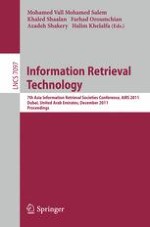This book constitutes the refereed proceedings of the 7th Asia Information Retrieval Societies Conference AIRS 2011, held in Dubai, United Arab Emirates, in December 2011.
The 31 revised full papers and 25 revised poster papers presented were carefully reviewed and selected from 132 submissions. All current aspects of information retrieval - in theory and practice - are addressed; the papers are organized in topical sections on information retrieval models and theories; information retrieval applications and multimedia information retrieval; user study, information retrieval evaluation and interactive information retrieval; Web information retrieval, scalability and adversarial information retrieval; machine learning for information retrieval; natural language processing for information retrieval; arabic script text processing and retrieval.
